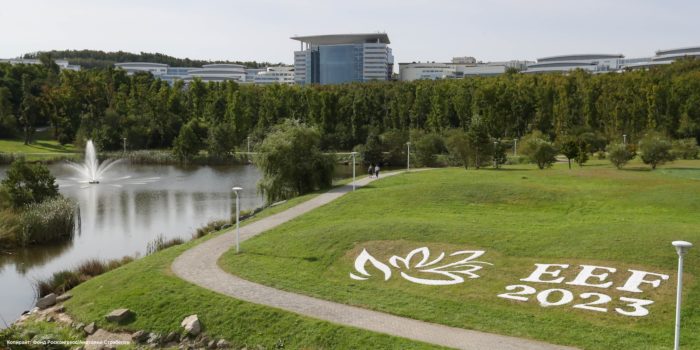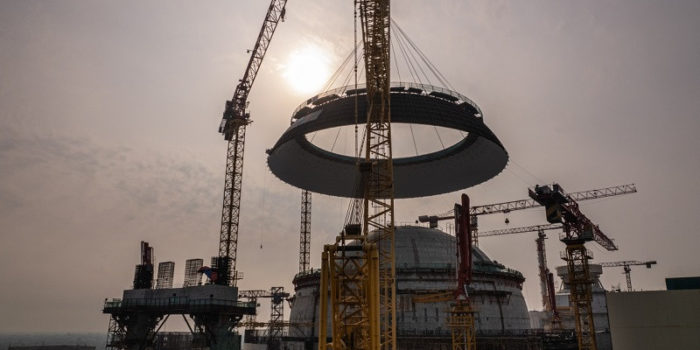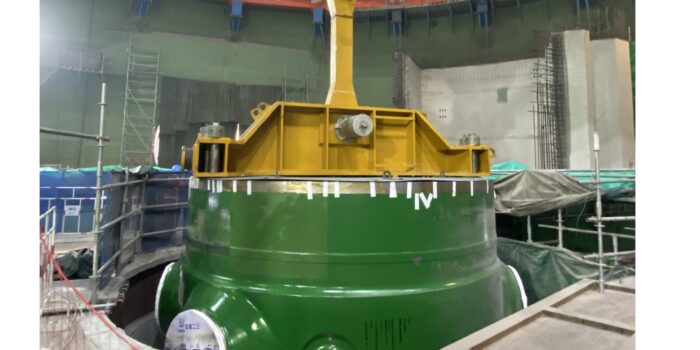Advantages of wind energy:
- quick installation, low maintenance and operating costs;
- no environmental pollution. Energy generation from wind does not result in the emission of harmful substances into the atmosphere or the generation of waste;
- the area in the immediate vicinity can be fully utilized for agricultural purposes;
- the use of renewable energy sources allows to save on fuel, on the process of its extraction and transportation.
Many factors are usually taken into account when choosing a location for wind farms:
- climatic conditions;
- ability to connect to network utilities;
- transportation accessibility of locations (availability and distance from roads suitable for transportation of construction equipment and WPP components; analysis of restrictions on component delivery routes (bridges, tunnels and etc.);
- impact on the public’s life quality (noise effects, visual impact, shadow flicker effect from WPP);
- wind resources (depending on the class of the wind turbine used, the wind shall be from 5.5 m/s and higher).
Environmental impact of Rosatom’s wind farms.
- The generation of all wind power plants of the Rosatom Renewable energy JSC, since the commissioning of the first WPP, amounted to more than 7,5 billion kWh of electricity. The operation of all WPPs during this period prevented the emission of greenhouse gases into the atmospheric air in the amount of more than 2,88 million tons of CO2 equivalent.
For comparison: 2.88 million tons of CO2 per year can be emitted by about 614 thousand cars. This is more than the number of cars registered in Perm (248 thousand cars) with a population of over 1 million people produce; - Novolakskaya WPP will be able to supply energy to more than 240,000 households monthly;
- and after the construction of the WPP is completed and the wind farm is put into operation, the land is reclaimed (fertile layer is regained) and the land is released to agriculture. Turbines occupy only 1% of the entire wind farm territory, and 99 % of the territory can be occupied by agriculture. The territories of Rosatom’s wind farms are used for pastures and fields for agricultural crops (sunflower, oats, wheat, corn, etc.);
- for the State Atomic Energy Corporation Rosatom (ROSATOM), a leader in low-carbon energy, wind energy development is an important element of its green portfolio. Wind farms contribute to ensuring clean energy generation for the country. The goal is 25 % nuclear power in the balance and achieving carbon neutrality by 2060.
Myths about wind energy:
Myth 1. Noise and low-frequency vibrations.
Like any other mechanism, a running wind turbine produces sound. Alas, nothing can be done about it. According to the current regulations, turbines are installed at a distance of no closer than 300 meters from housing, and the sound volume ranges from 35 to 45 dB.
For comparison, the sound volume of an ordinary home refrigerator is about 40 dB. Thus, the noise from the wind turbine is within the normal range.hus, the noise from the windmill is within normal limits.
Myth 2. Increased mortality of birds and bats in areas where wind farms are located.
All modern wind power plants are equipped with special devices to deter and protect from wild animals and birds: sounds, radars, thermal imagers. In addition, the blades can be automatically switched off during the periods of highest bird activity.
Pre-design surveys also include mandatory studies of migration routes and habitats of wild bird and bat populations.
The construction of the Novolakskaya Wind Power Station with the installed capacity of 300 MW has begun in the Republic of Dagestan. The Novolakskaya WPS is located in the Kumtorkalinsky and Novolaksky Districts of the Republic of Dagestan.
The installed capacity of the wind farm will be 300 MW. The planned average annual energy yield is 879 million kWh. The Novolakskaya Wind Power Station will consist of 120 wind power plants with a capacity of 2.5 MW each.
The construction will be carried out in two stages: the first stage (61 wind power plants with a total installed capacity of 152.5 MW) will be completed in 2025. The second stage (59 wind power plants with a total installed capacity of 147.5 MW) will be completed in 2026.
Many factors are usually taken into account when choosing a location for wind farm placement, excluding the negative impact on the avifauna:
location outside the boundaries of specially protected natural areas;
distance from main bird migration corridors, as well as key ornithological areas, wetlands, natural (water bodies) and man-made (garbage dumps) feeding places.
The area, where the Novolakskaya WPS will be located, passes near the flight route of Caspian (Asian) migratory birds flying from north to south and back along the western coast of the Middle Caspian. Colonies of bats also live near the territory. In order to assess the degree of project impact on birds, employees of the Caspian Institute of Biological Resources of the Dagestan Federal Research Center of the Russian Academy of Sciences conducted scientific monitoring of the avifauna.
The results of the study revealed that the height of rotation of the wind wheel blades is outside the main flight zone of birds. Accordingly, the construction and operation of the wind power station will not lead to the loss of species diversity of birds and bats.
Myth 3. Unpredictability of wind energy.
Upgrade of WPP components, automation of wind farm operations, predictive analytics, use of predictive maps and continuous research of wind characteristics allow planning of energy generation and storage, reducing the need to use conventional energy sources.
For example, Rosatom Renewable energy, JSC operates a commercial dispatch center (CDC) to centralize short-term forecasting processes for energy generation by WPPs. The CDC operates in 24/7 mode and provides for the implementation of a set of functions while operating on the wholesale energy and capacity market, including from the prompt submission of requests with projected values of energy generation to analytical tasks to search for and analyze factors affecting the efficiency of WPPPs.
When implementing the project, the company’s specialists developed an innovative information and analytical system for decision-making support in forecasting generation, based on modern algorithms of data analysis, including the use of machine learning.
Myth 4. Cost of wind energy and long period of “energy payback”.
Sometimes one may hear that a wind turbine never generates the amount of energy that was spent to generate it. This, to put it mildly, naive viewpoint implies that mankind is investing hundreds of billions of dollars annually in some pointless venture. Obviously, the timeframe for recovering energy costs depends on where the facility is located.
In most cases, developers do act sensibly and install RES generation facilities in suitable natural settings.
The cost of wind energy for the consumer is determined by the market. The consumer pays for wind energy exactly as much as he pays for energy generated in any other way.
Myth 5. Wind power plants have a negative impact on land resources.
According to months of research, close proximity to wind power plants improves the removal of carbon dioxide from the soil, which in turn promotes photosynthesis and growth of crops and soybeans.
Supporting point: The foundation of a wind power plant (WPP) with a diameter of about 10 meters is usually completely underground, and this allows the agricultural use of the land to be extended almost to the base of the tower. Recent studies not only fail to prove the negative impact of WPP operation on vegetation, but, on the contrary, note their possible positive impact on agricultural crops.




